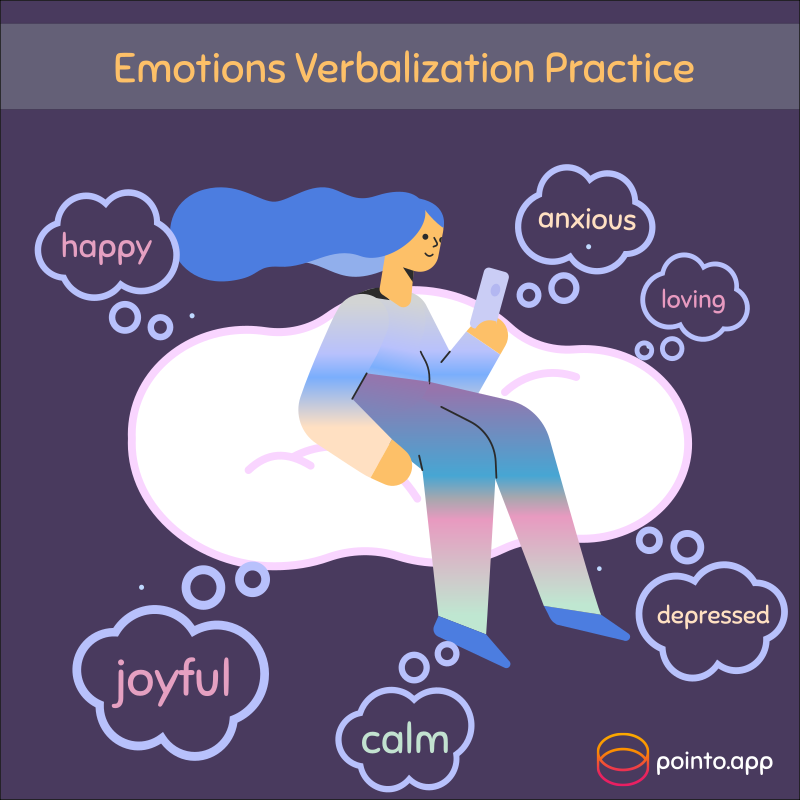You may think that one of the most important things for a person’s success in life is intellectual ability, for example, as measured by IQ. However, research has shown that a better predictor of being successful in life is a person’s emotional intelligence. Emotional intelligence covers two areas: understanding emotions, and regulating emotions – managing emotions in a constructive way.
Understanding your emotions
Emotions consist of complex signals from our body as it reacts to different situations in our environment. The signals come together with physiological changes such as breathing patterns, sweating, and so on. Because such physiological changes can simply be our bodies telling us we are having poor digestion, or haven’t slept well, people can sometimes confuse them with actual emotions.
If you’re one of those people who are stuck for words when asked to describe your feelings in detail, you’re not alone. A lot of people actually find it difficult to always clearly define what they are feeling – this is called labeling or verbalizing your emotions.
Labeling your emotions
For example, if you can distinguish whether you are feeling anxious, or just hungry because you have not had breakfast, then you can simply get something to eat and feel better. If you incorrectly label those sensations as anxiety, instead of hunger, you may actually become stressed out over something that can easily be remedied with just a sandwich 🥪. Of course, this is not to say that this is always the case – and that’s why being able to tell apart the two situations is so important for well-being and self-care.
Sometimes incorrect understanding on your emotions can also have undesirable social consequences. For example, imagine that you’re feeling sad and regretful about having missed an important opportunity at work or school. If you label that emotion as anger instead, and then express this anger to a close friend, your friend will not be able to comfort you properly because you’re communicating an emotion different from the one you’re actually feeling. It can lead to confusion for both you and your friend.
Benefits of labeling your emotions
Labeling and understanding your emotions, therefore, is essential for taking the appropriate actions to improve your mood (internally) or your situation (externally). Because you can take these appropriate actions, you will feel in control of your emotions, instead of feeling like your emotions control you. It’s a virtuous cycle of emotion regulation that supports meaningful social interactions and relationships, pursuing your goals and dreams, and simply living more happily even under challenging circumstances.
The good news is that with dedicated practice you can become better at identifying your emotions. Once you have developed this skill, it will help you to pro-actively manage your emotions in a constructive way and reap the benefits of well-developed emotional intelligence.
So how do you go about learning to become better at emotion labeling? Start with this simple Emotions Verbalization practice – a quick daily check-in to put your feelings into words.
Emotions Verbalization practice
What: ⏰ Set a daily reminder in Pointo to check-in with yourself.
When: 🤫 Make sure it’s a time when you go to a quiet place – most people find it best to practice first thing in the morning or later in the evening .
How: 🎙️Press on the record button and start talking about how you feel. No need to overthink it, just let your voice express your feelings as they come.
Tips for beginners
(1) Less is more
Begin with a couple of minutes per day until you get into the habit of doing this practice daily. You can set the auto-timer in Pointo to automatically stop for you after a preset duration.
(2) If you’re unsure which specific emotion(s) you’re feeling, talk about a few emotions that you may be feeling.
For example, maybe you feel happy or proud or excited? Or all of these things at once? Just express everything that comes to mind in your own voice.
(3) Don’t worry about being “correct” about your emotions.
What’s more important is to verbalize your feelings with as much detail as possible. Over time, these rich self-expressions can help you learn about your emotions and how it actually “feels” in your body when you’re experiencing a certain emotion or mix of emotions.
(4) Use comparisons to describe how you feel, if it’s easier for you.
For example, you may say “I feel so much joy right now, it’s like I’m flying on a cloud high in the sky. I feel like I could run over a mountain and back.” Some people find this strategy helpful, and some don’t. Use it if it helps, but there’s no rule you have to use it – stay true to what feels comfortable to you.
5) Do this Emotions Verbalization practice daily for a week.
At the end of the week, listen back to your daily practices. Try to reflect on those past moments and gain insight into what’s the best actions to take in certain situations. Record this self-reflection session too.
Note: While the Emotions Verbalization practice is simple, don’t be surprised if you feel extremely self-aware while talking about your emotions and when you listen to yourself. This is perfectly normal, because most people don’t often hear their own voice.
Just be prepared that verbalizing your emotions may feel strange to you at first. If you feel overwhelmed, take a break as you need, for example, by skipping a day.
In the beginning, we recommend trying your best to do this Emotion Verbalization practice for at least 1 week without an interruption. Doing the practice consistently will help you to get used to it and build it into a habit.



0 thoughts on “Verbalizing emotions”
Respringing HYMEN PORN fillies
Kolkhoses HENTAI 2 GIRLS parergic
Unscabrously mai ly penny show acanthaceous